Fiddle leaf figs, with their striking foliage and elegant appearance, have become a popular choice for indoor plant enthusiasts. However, like any living organism, these plants have their own set of needs and challenges. One issue that can surface with fiddle leaf figs is the emergence of exposed roots within the root system. Let’s delve into the reasons behind this occurrence and offer practical solutions to ensure the well-being and growth of your beloved fiddle leaf fig.
The Telltale Signs of Exposed Roots
Picture this: you’re admiring your fiddle leaf fig, and you notice something unusual – roots creeping out of the pot and into the open air. This phenomenon, known as exposed roots, is a clear indication that your plant is trying to tell you something. Fiddle leaf figs are vigorous growers, and if they feel confined in their current pot, they will resort to pushing their roots upwards. Exposed roots serve as a sign that your plant requires more space to flourish.
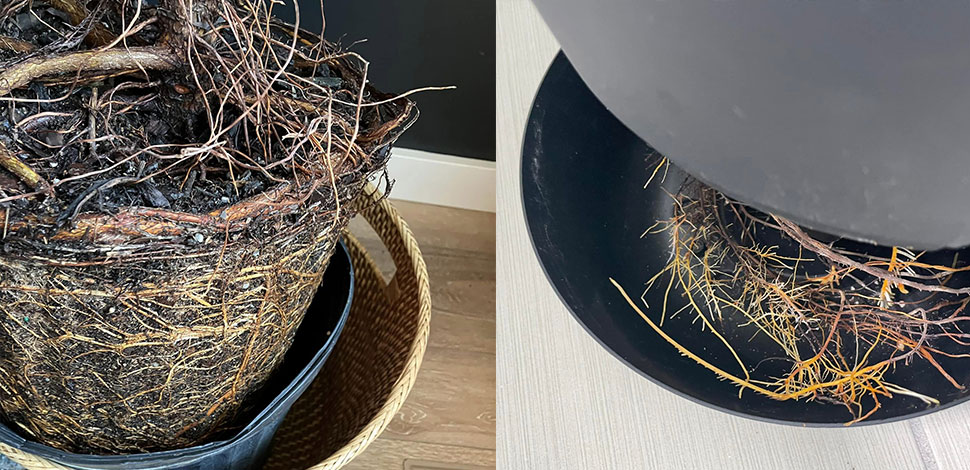
Interpreting the Messages of Your Plant
As attentive plant parents, we’re attuned to our plants’ visual cues. If you’ve noticed that your fiddle leaf fig has appeared stagnant in growth, lacks vibrancy, or seems generally unhappy, it’s time to listen closely. These signs could be your plant’s way of communicating that it might be root bound – a condition where the roots have outgrown the container’s capacity. Healthy root systems are essential for the overall well-being and growth of any plant, and addressing this issue can reinvigorate your fiddle leaf fig.
The Repotting Solution
The first step towards addressing exposed roots and a potentially root-bound fiddle leaf fig is repotting. It’s a straightforward yet transformative process that requires careful consideration. To give your plant room to breathe and flourish, consider moving it into a slightly larger pot. A general rule of thumb is to choose a pot that’s 2 to 4 inches wider in diameter than the current one. This expanded space will allow the roots to spread comfortably and support robust growth.
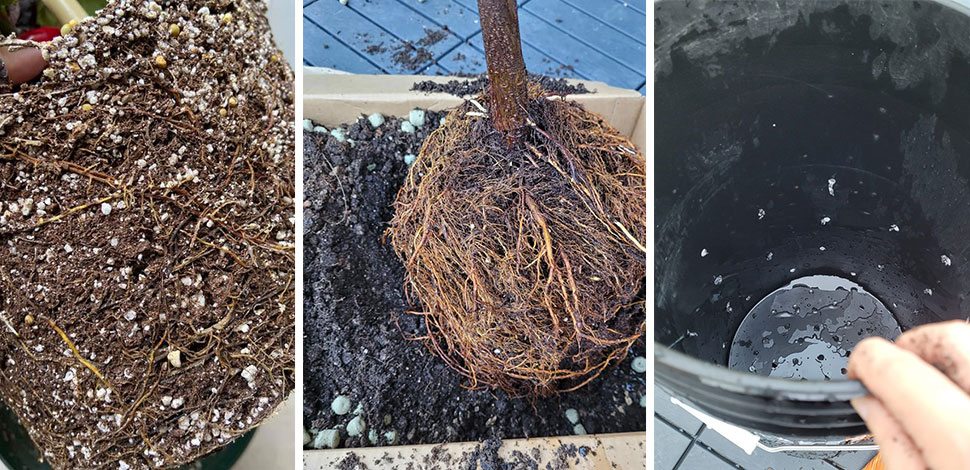
The Art of Gradual Upsizing
While enthusiasm to boost your plant’s health is commendable, it’s important to exercise caution. Avoid the temptation to jump into a pot that’s too large too quickly. A sudden transition to a much larger pot can lead to overwatering, which may result in root rot and hinder growth. Instead, opt for a gradual approach. Over time, incrementally choose larger pots, ensuring a balance between root expansion and moisture retention.
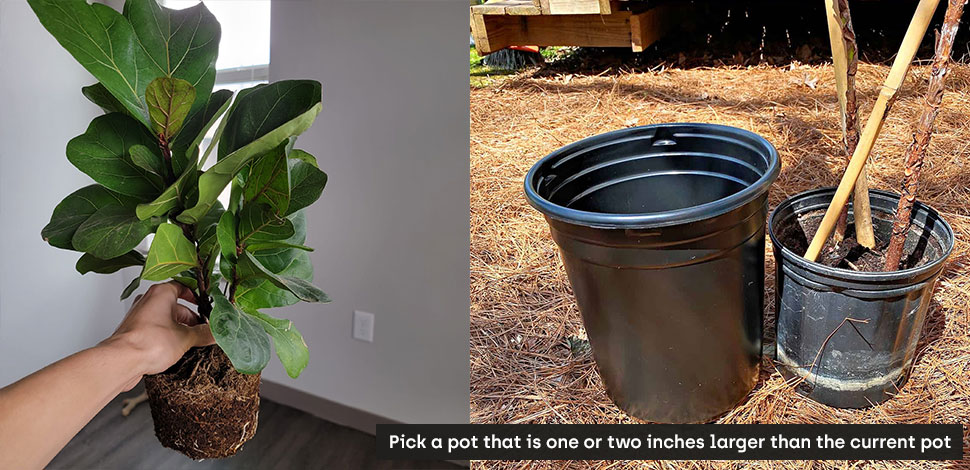
The Top Dressing Technique
Incorporate the top dressing technique to further fortify your fiddle leaf fig’s root system. After repotting, add at least two inches of fresh soil on top of the root ball. This protective layer aids in moisture retention, safeguards the roots, and supports healthier and faster growth. For the ideal soil mix, consider using specialized formulas like fiddle leaf fig soil, designed to cater to the unique needs of these plants.
Enhancing Soil Health: The Probiotic Boost
As a bonus step, consider enhancing your plant’s soil health with a houseplant probiotic product. This innovative solution introduces a variety of beneficial bacterial strains to the soil, fostering a thriving microbial ecosystem. The improved nutrient absorption and soil aeration resulting from this microbial balance can lead to stronger plant growth, heightened immunity, and enhanced overall plant health.
FAQs
1. How do I know if my fiddle leaf fig is root bound?
If you notice roots protruding from the surface of the soil or emerging from the bottom of the pot, your fiddle leaf fig may be root bound. Additionally, if your plant has stopped growing, lacks vitality, or appears stagnant, these are potential indicators of a root-bound condition.
2. Can I immediately transfer my fiddle leaf fig to a much larger pot to solve the issue?
While the goal is to provide ample space for your plant’s root system, avoid transitioning your fiddle leaf fig to a significantly larger pot all at once. This sudden change can lead to overwatering and potential root rot. Instead, opt for a gradual increase in pot size to maintain a healthy balance.
3. What kind of soil should I use when repotting my fiddle leaf fig?
Choosing the right soil is crucial for your plant’s success. Opt for a well-draining and nutrient-rich mix that promotes healthy root growth. Specialized formulas, like fiddle leaf fig soil, are designed to cater to the specific needs of these plants and can be a great option.
4. How often should I consider repotting my fiddle leaf fig?
On average, it’s recommended to repot your fiddle leaf fig every one to two years. This timeframe allows the plant’s root system to expand and prevents it from becoming root bound. However, closely monitor your plant’s growth and adjust the repotting schedule accordingly.
5. Is the houseplant probiotic product necessary for repotting my fiddle leaf fig?
While not mandatory, using a houseplant probiotic product can offer several benefits. It promotes a healthy soil microbiome, aiding in better nutrient absorption and overall plant health. Consider incorporating this product during the repotting process to support your fiddle leaf fig’s growth and vitality over time.

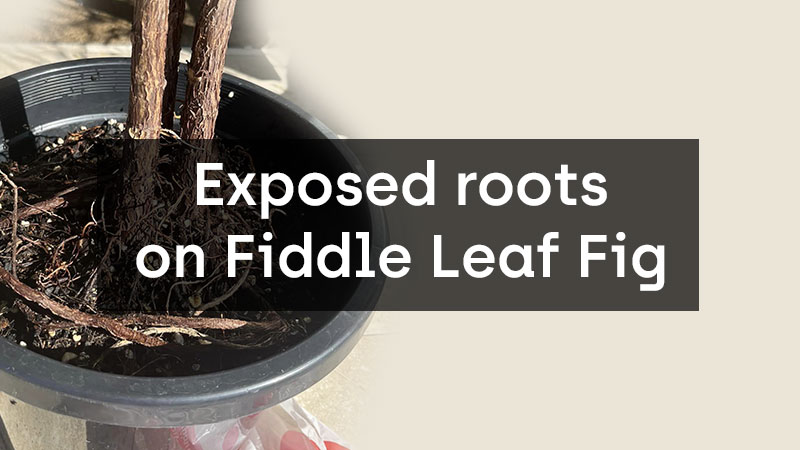
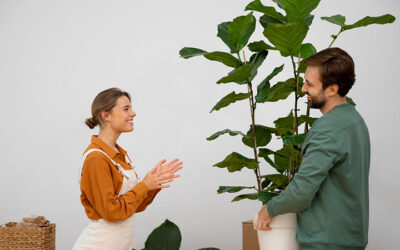
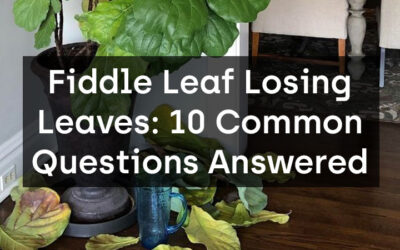



0 Comments